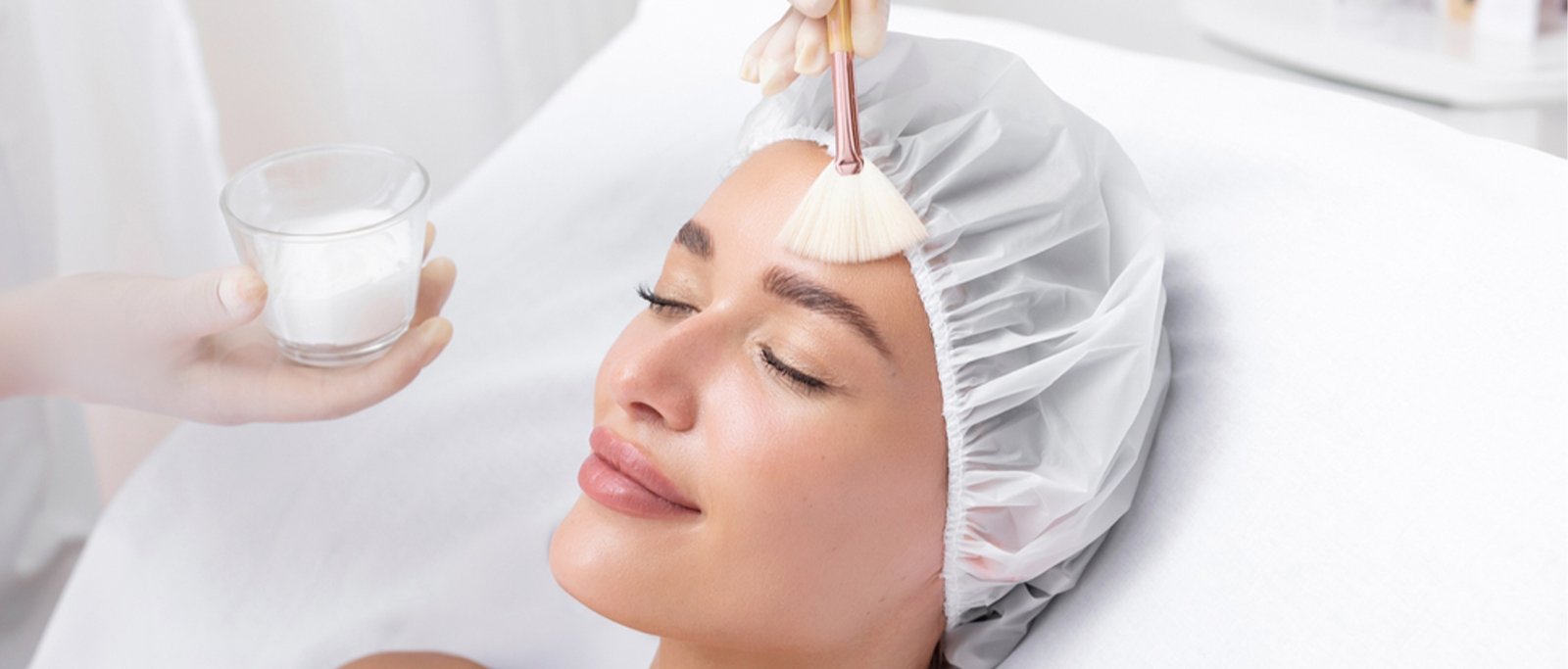Many Ph optimized and personalized solutions from mild to moderate strength are used to reduce the inflammatory acne (red acne) on the face helps to reduce the primary lesions on the face like white heads and black heads It also helps to reduce the post acne spots and superficial scars on the face.
Helps to remove superficial dead skin and so rejuvenates skin
spot peel : peel applied just on the acne surface when you have only 2-3 acne lesions peels gives excellent results when used in combination with derabrassion.
FAQs
Chemical peels can improve the skin’s appearance. In this treatment, a chemical solution is applied to the skin and eventually peel off. The new skin is usually smoother and less wrinkled than the old skin.
Reduce fine lines under the eyes and around the mouth
Treat wrinkles caused by sun damage and aging
Improve the appearance of mild scars
Treat certain types of acne
Reduce age spots, freckles, and dark patches (melasma) due to pregnancy or taking birth control pills
Improve the look and feel of skin.
Areas of sun damage may improve after chemical peeling. After a chemical peel, skin is temporarily more sensitive to the sun, so wear sunscreen every day. It should say “broad-spectrum” on the label, meaning it protects against the sun’s UVA and UVB rays. Also, it should be a physical sunscreen and be above SPF 30. Limit your time in the sun, especially between the hours of 10 a.m. and 2 p.m., and wear a wide-brimmed hat.
Skin sags, bulges, and more severe wrinkles do not respond well to chemical peels. They may need other kinds of cosmetic surgical procedures.
You can get a chemical peel in a doctor’s office . It’s an outpatient procedure, meaning there’s no overnight stay. The professional (dr madhavi )who does your peel will first clean your skin thoroughly. Then she will apply one or more chemical solutions — such as glycolic acid, trichloroacetic acid, salicylic acid, lactic acid, or carbolic acid (phenol) — to small areas of your skin or full face or which ever body part needed to get peel done . That creates a controlled wound, letting new skin take its place.
Depending upon the type of chemical peel-mild , medium depth and deep peels medium depth and deep peels may result in swelling as well as blisters that may break, crust, turn brown, and peel off over a period of seven to 14 days. Medium-depth peels may be repeated in six to 12 months, if necessary. After treatment, you may need bandages for several days on part or all of the skin that was treated. You’ll need to avoid the sun for several months after a chemical peel since your new skin will be fragile.
Deep chemical peels reaction similar to sunburn occurs following the procedure. Peeling usually involves redness followed by scaling that ends within three to seven days. Mild peels may be repeated at one to four-week intervals until you get the look you’re after.
Some skin types are more likely to develop a temporary color change in the skin after a chemical peel.

